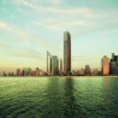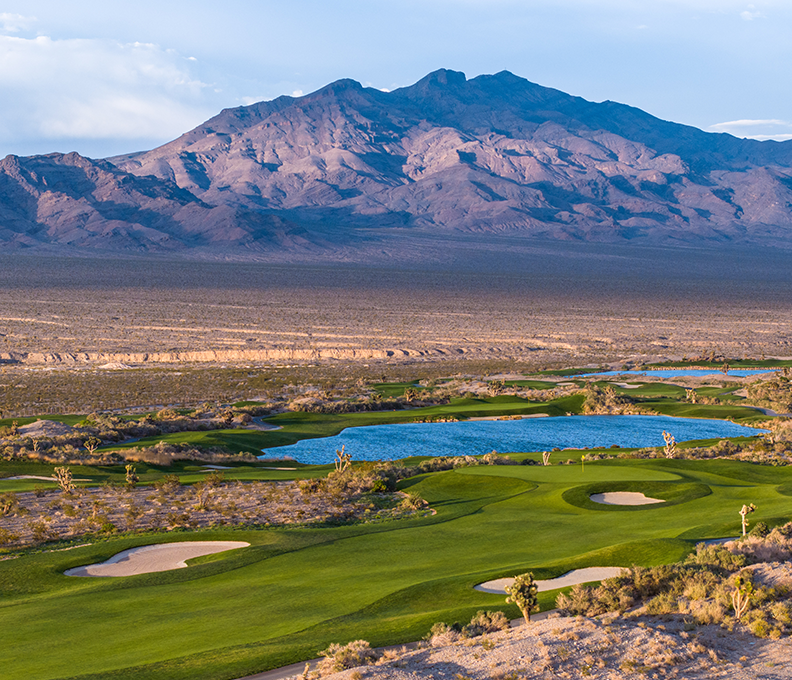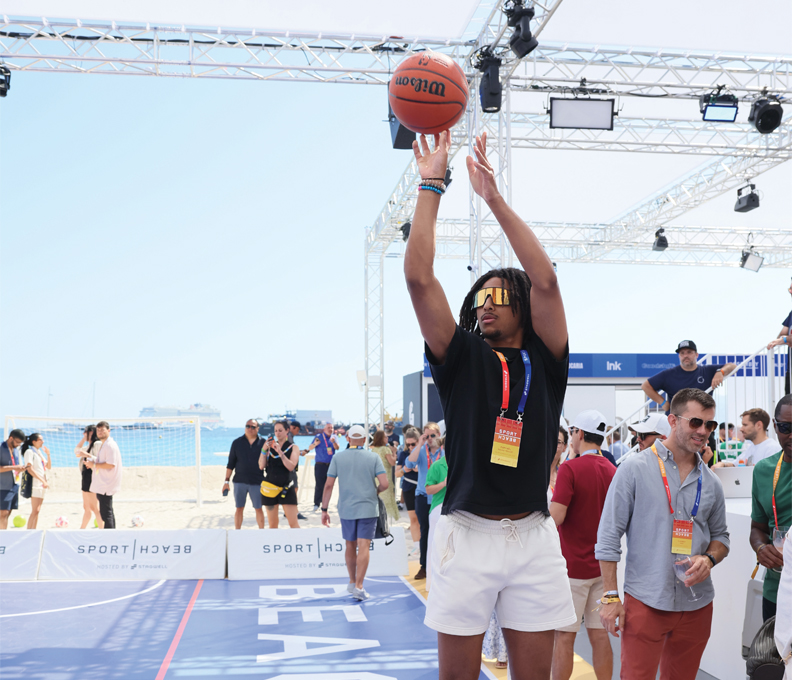Cultural Nuances
April 30, 2018


The UAE capital exudes a casual persona, yet maintains its opulence. This is evident on an afternoon drive in Corniche along the promenade that leads up to the UAE’s Presidential Palace. The roads are almost empty, unlike a typical bustling metropolis. And maybe this is why it is easier to admire the beauty of the drive – you have an unobstructed view of the sea on one side and glass skyscrapers on the other. Some of these are an architect’s delight.
One such striking example is Capital Gate built by Abu Dhabi National Exhibitions Company. Located on Khaleej Al Arabi Street parallel to the seaside promenade, the structure is purposely set at such an extreme angle that it caught the attention of Guinness World Records who recognizes it as the World’s Furthest Leaning Man Made Tower.
About a 12-minute drive from here is The Aldar Headquarters. This one is a 23-story, 360-foot, 2D circular building. Inspired by a clam shell, the building has two convex discs put together – a circular elevation on the front and rear – and curved in all other directions. Needless to say, both these buildings are coveted addresses in Abu Dhabi.
In fact, if you have an office or home in any of the multi-story buildings around this area, consider yourself lucky. After all, your neighbor is the president of the UAE with his palace just a short drive down the road.
The other affluent area of the emirate is Saadiyat, a newly developed island about a 30-minute drive northward from Khaleej Al Arabi Street. What makes it noteworthy, apart from the expensive beachfront villas, is that turtles visit to lay eggs here around May and June. Scores of tourists visit to watch them waddle across the sand. There is also the Saadiyat Beach Club where you can buy a pass (weekday AED 220/$60), weekend AED 420/$115) for access to the private beach, pool, cabanas and restaurants.
Of course, not all of Abu Dhabi is as glamorous. If you drive down Eastern Road towards Gold Souk, the area appears tired, despite the number of high-end car brands that roam the streets here. Glittering glass towers are replaced with stout brick buildings. There are humble homes, utility shops and a few hotels – mostly in the mid-to-budget category. This part of the emirate is more traditional and has fewer tourists.
Al Maryah, Reem or Yas islands to name a few, are the ones you’re most likely to visit and see more tourists. They are heavily populated with malls, hotels and recreational facilities, and most offices and mixed-use buildings are found in the surrounding areas. Among them, you will also find parks and attractions that punctuate Abu Dhabi’s cultural experiences.
The Louvre Abu Dhabi
Among the most anticipated of Abu Dhabi’s architectural marvels, and one that should be on any future visitor’s itinerary, is the new Louvre Abu Dhabi. Originally set to open in 2012, the long-awaited museum finally premiered in November 2017. The dome-shaped building on Saadiyat Island was designed by Pritzker Prize-winning architect Jean Nouvel.
Two-thirds of the museum is covered by a white latticework disc, inspired by the interlacing of palm leaves, used traditionally as roofing material in the region. The $650 million museum is estimated to house 600 pieces of art across 23 halls, with works borrowed from the Louvre in Paris, the Musée d’Orsay, Centre Pompidou and the Château de Versailles.
Also on Saadiyat Island, the Guggenheim Abu Dhabi is expected to be 12 times larger than its New York counterpart, although a contract has yet to be awarded for its construction. The Zayed National Museum is on track to open within the next few years – backed by the British Museum, it documents the history and unification of the United Arab Emirates.
Abu Dhabi Falcon Hospital
Near Abu Dhabi International Airport, this full-fledged hospital,
apart from being dedicated to the care of this predatory bird,
is a busy tourist spot too. The Falcon World Tour talks about falcons, the history of falconry and the significance of the activity from the past to modern times.
The number of patients undergoing treatment here reveal how intrinsic falconry is to Gulf culture even today. In ancient times, this bird was used to hunt food for desert tribes. Today, it still hunts but as a sport for humans. At a minimum, training this ferocious predator takes a grueling three weeks, and the skill of the falconer is highly respected. A leather hood covers the bird’s eyes at all times to make it easier to control.
The hospital also has a falcon museum and a free-flight aviary where the birds roam unrestrained. At one point during the tour, you may find it amusing to watch the bird get a pedicure. The highlight, however, is posing with the falcon on your arm, an experience unique to this part of the world.
Open 10:00 AM – 2:30 PM (tours must be booked in advance); tour price AED 170/$46 for two hours; falconhospital.com
UAE Heritage Village
A couple of beautiful white swans ran past us as we entered Heritage Village, a reconstruction of a traditional oasis village on the waterfront. We followed their footprints in the desert sand to shops selling touristy items such as postcards, magnets, hats, T-shirts, spices, old-fashioned water pouches and more. There are also interesting workshops where you can watch demonstrations involving traditional skills for tannery, glass-blowing, metal work, pottery, weaving and spinning.
I was most intrigued by the living conditions of oasis villagers that is recreated here. The nomads lived in animal hide tents during winter to keep warm, and during the other seasons in huts made from palm fronds; the triangular tents formed a natural funnel to capture the breeze while rectangular ones had a wind tower, also built from palm fronds.
Completing the village scene is the villagers’ primary mode of transport – the camel. This popular attraction draws a long line to wait for a ride of a few minutes. However it’s definitely worth the experience – your balancing skills are put to test when the animal attempts to sit and stand.
For more insight into the life of such villages, visit the museum in the old fort for a glimpse into the past, featuring jewelry, attire, lifestyle products and ancient pearl diving equipment.
Open Saturday-Thursday 9:00 AM – 4:00 PM and Friday 3:30 PM – 9:00 PM; admission is free; torath.ae
Abu Dhabi Pearl Journey
This tour of Abu Dhabi’s once thriving pearl industry is cultural as well as educational, giving visitors first-hand experience in this archaic trade. You are welcomed on board the 90-minute sail on the traditional jalboot or dhow with Arabic coffee and dates. During the journey that takes you along the emirate’s eastern mangroves – home to herons, egrets, flamingos and other seabirds – the guide tells you the story of pearl diving in this region. It’s not all talk though. The tour gets more interesting when the guide demonstrates how divers used to work, and then challenges you to open an oyster shell with a special knife to avoid harming the precious pearl inside.
Open daily 9:00 AM – 7:00 PM (tours must be booked in advance); AED 500$136 for two hours; adpearljourney.com
Corniche Island
The sights here are best enjoyed cycling along the five-mile bicycle path on the Corniche. Rental booths are plentiful along this stretch. There is a long sandy beach, restaurants, hookah cafes and water activity huts here. Walking pathways weave through fountains and landscaped gardens that are impressively lush, given the arid weather here.
Corniche beach has been awarded the Blue Flag status – an internationally recognized eco-label confirming clean and safe water at beaches and marinas. For safety, fences have been placed in the water allowing you to swim only as far as 130 feet from the shoreline. On weekends, this sandy attraction is most crowded, especially in the evenings and non-summer months.
Galleria Mall
Shoppers looking for high-end brands will find Galleria Mall a good place to visit. Labels such as Alexander McQueen, Burberry, Cartier, Longines, Prada and Ralph Lauren to name a few, occupy one level of the mall. The other floor has mid-level brands such as La Senza, Tory Burch and Tommy Hilfiger. The food court here too not typical because your order is served in glass crockery with stainless steel cutlery.
Retail stores are open Saturday-Wednesday 10:00 AM – 10:00 PM, Thursday until midnight and Friday from 12:00 PM until midnight. Restaurants are open Sunday-Thursday 10:00 AM – 10:00 PM, and Friday and Saturday until midnight. thegalleria.ae
Sheikh Zayed Grand Mosque
After you walk through security at the mosque’s entrance, and get the guards’ nod on your attire (women must dress in a hijab and men must cover their shoulders and ankles), you enter a spiritual world built from pure, white marble. I, for one, was taken aback by the beauty of this snowy edifice with four minarets and 82 domes, all of which are visible from the bridges joining Abu Dhabi island to the mainland.
The largest of the domes — nearly 280 feet tall and over 100 feet in diameter — sits above the main prayer hall. The world’s largest hand-knotted carpet is also found here. Other features include marble columns inlaid with mother-of-pearl and a 12-ton chandelier, one of the largest in the world, sparkling with Swarovski crystals and 24-karat gold.
Overhead inside the domes, Moroccan artwork created from reinforced plaster quotes verses from the Quran. Attractive floral art colored with semi-precious stones such as abalone, amethyst, jasper, lapis lazuli, mother-of-pearl and red agate are embedded in the marble walls of the mosque creating a mesmerizing design.
We visited the UAE’s largest mosque at noon when temperatures
were soaring. Surprisingly, even when we walked barefoot in the outdoor areas, the marble felt cool on our feet. We learned this is because the stone is artificially cooled from below. On Friday and during key religious days, the mosque can hold upwards of 40,000 worshipers.
Open Saturday-Thursday 9:00 AM – 10:00 PM, Friday opens after 4:30 PM; admission is free; szgmc.ae/en
Al Jahili Fort
The fort was the summer residence of Sheikh Zayed when it was built in 1891. In the 1950s it served as the headquarters of the Oman Trucial Scouts, now known as Union Defence Force. Before the formation of the UAE, the Scouts protected the mountain passes and maintained intertribal peace among the eight Sheikhdoms along the coast.
In 2007, Abu Dhabi Tourism and Culture Authority carried out restoration work before opening this historic building and its surrounding courtyards and gardens to the public. In the exhibition center, a stunning collection of photographs entitled Empty Desert by British explorer Sir Wilfred Thesiger is on display. Additionally temporary exhibits are brought in to showcase the history of Al Jahili Fort. There are also displays about the historically rich Al Ain region where the fort lies.
Open Tuesday-Thursday and Sunday 9:00 AM – 5:00 PM, Friday 3:00 PM – 5:00 PM; admission is free; visitabudhabi.ae
Other attractions in the vicinity include Al Ain National Museum,
Al Ain Palace Museum, Al Ain camel market, Al Ain Zoo, Ferrari World and Emirates Park Zoo.




